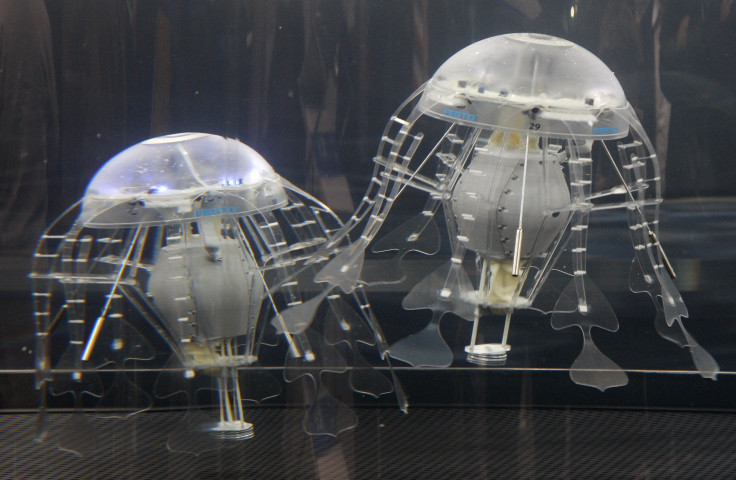Jellyfish with multiple water-shooting jets could drive design of new underwater vehicle

Scientists have discovered the potential of a tiny jellyfish with a jet-shooting structure to improve the future of undersea exploration. The colonial jellyfish with an unusual feature of having multiple water-shooting jets with coordinated system inspires a natural solution that may contribute to the design of an underwater-distributed propulsion vehicle.
The researchers of the new study, published in the journal Nature Communications, are exploring how the jellyfish, called colonial siphonophores, swims rapidly by coordinating multiple water-shooting jets. The colonial siphonophores resemble several tiny jellyfish strung together that are much different than larger, single-jet-powered jellyfish.
Each colonies have four to 12 jet-like swimming bells, which is relatively rare in the animal kingdom as most of the organisms that swim only use a single jet for propulsion, according to Kelly Sutherland, a biologist at the University of Oregon Institute of Marine Biology in the US.
"This is a very interesting system for studying propulsion, because these jellies have multiple swimming bells to use for propulsion," Sutherland said. With multiple static jets, the colonial jellyfish can achieve all the manoeuvrability it needs, which could help designing a system that is “simple yet elegant,” she added.
The jets, according to Sutherland, appear to be essentially stereotypic in direction when the organism swims forward. The colonial jellyfish jets in a consistent direction by alternating which units contract and how strongly they move, particularly in turning.
The researchers aim for further studies to analyse how the animals maximise their control of very basic motion patterns to attain such complex results. As they believe the identification of the controlling patterns will allow the understanding of the high-performance levels of animal swimmers, and some of the information will be applicable to human-engineered vehicles, said John Costello of Providence College in Rhode Island, the study's lead author.
Contact the writer at feedback@ibtimes.com.au or tell us what you think below





















